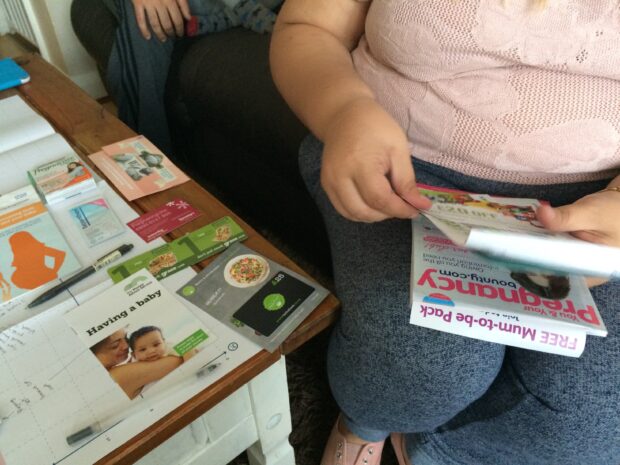As you’ll have seen from the previous blog post, we here at Livework have been lucky enough to be working with the digital team on this exciting and important project, Having a Baby. And, as project leader and senior service designer, I’ve been asked to write about some of the practical things we do on this kind of project and especially the research stage.
In truth, for this project we’re delivering more than just research, as we will be going much further than developing an understanding of what is and isn’t going on during families’ experiences of pregnancy, to actually generate ideas, which we’ll then test with families and health professionals. So, making things too.
But back to the research, and how does Livework as a commercial design consultancy do this?
First off, our research, especially on a project like this, and at this stage, we’d use a qualitative research approach, as opposed to a quantitative one (we do use both, but are selective); here are a few useful differences:
- Generally, a quantitative approach tells you that something is happening, whereas a qualitative approach helps you understand why.
- Quantitative is most useful for measurement and uses a fixed number of questions, whereas qualitative is much more empathic and uses open ended discussions (as well as utilising other tools like shadowing, observations and journal keeping), and is particularly useful for inspiration.
- Quantitative research (like market research and surveys) tends to use calculations and computations to reach conclusions, whereas qualitative requires more bespoke and human analysis and synthesis.
- Finally, Quantitative research uses large sizes of participants, anything from 50 and up to be statistically robust, and yields a small number of conclusions. Qualitative uses comparatively small sample sizes, 6-8 or 10 being common, and gives us lots of juicy insights.

I think if you asked almost any service designer which project stage they enjoy the most, a fair few would say the research stage (or as we call it, ‘Understand’). Why? Because this is where we get so much of our inspiration. And, because a design process needs to be fuelled by inspiration. It’s incredibly important to get that right. That said, like so much of what we do, most of it is common sense and not rocket science.
So, some top tips for successful research:
What do you want to learn?
You need to start with a big question or two. You’ll find those questions in Alice’s post from last month, but aim to keep it simple. Start with a biq question then break it down.
Where are we going to answer that question?
The answer is almost always to meet people in their natural environments, which in this instance was home for the families we met and place of work for the mid-wives and health visitors. In short you need to go to where your users are and not expect them to fit in with your schedules. So, put on your detective mac, grab your compass and go find them.
But how do you find them?
Well, we use three methods. Firstly, we might try our client’s connections or contacts, (we might be researching their front line staff), or maybe our networks (it’s surprising who we know). Social media can come in handy.
Secondly, we might use a professional recruiter. These companies exist to help with both qualitative research (the small numbers which we prefer to use), as well as quantitative surveys and the like.
Thirdly, more guerilla tactics. For example, if I quickly wanted to recruit a few mums, I might just sit on the tube or other public transport and watch out for the bumps! Just going up to people on the street and asking them, politely, can work really well.
What do you do next?
Simple, sit down and have a chat. Think of it rather like getting to know someone for the first time. A little bit about them and their background, then questions about their day, or whatever is relevant, gradually getting closer and closer to the ‘thing’. We don’t have a list of questions, but rather a ‘discussion guide’ with topics we want to cover, and ask open-ended questions.

What do you need?
Some people are very good at this, (some people specialise in research) but it’s not everyone’s cup of tea. You need oodles of curiosity, heaps of natural empathy and lots of patience. Plus a real love of people. A few tricks or tools up your sleeve to help things along can always come in useful, for example:
- Mapping and drawing
Ask your participant to draw their experience on a timeline, looking at before, during and after the experience you’re interested in (we used this tool on the baby project). Map emotional positives and negatives. Map where the interactions are. Or you could ask them to keep a diary, or make a video blog. - The five whys
If you can’t get to the real reason something is or is not happening, try asking “why is that?” again and again (politely). Apparently if you do this five times you’ll unearth the real reason. Try it on a friend, it’s like 20 questions, except quicker!
And it’s those real reasons we’re looking for. We’re looking to understand the unmet needs, reveal the natural beliefs and untangle the behaviours we all have, usually without realising it. Because if they were obvious, then we wouldn’t really need research would we?